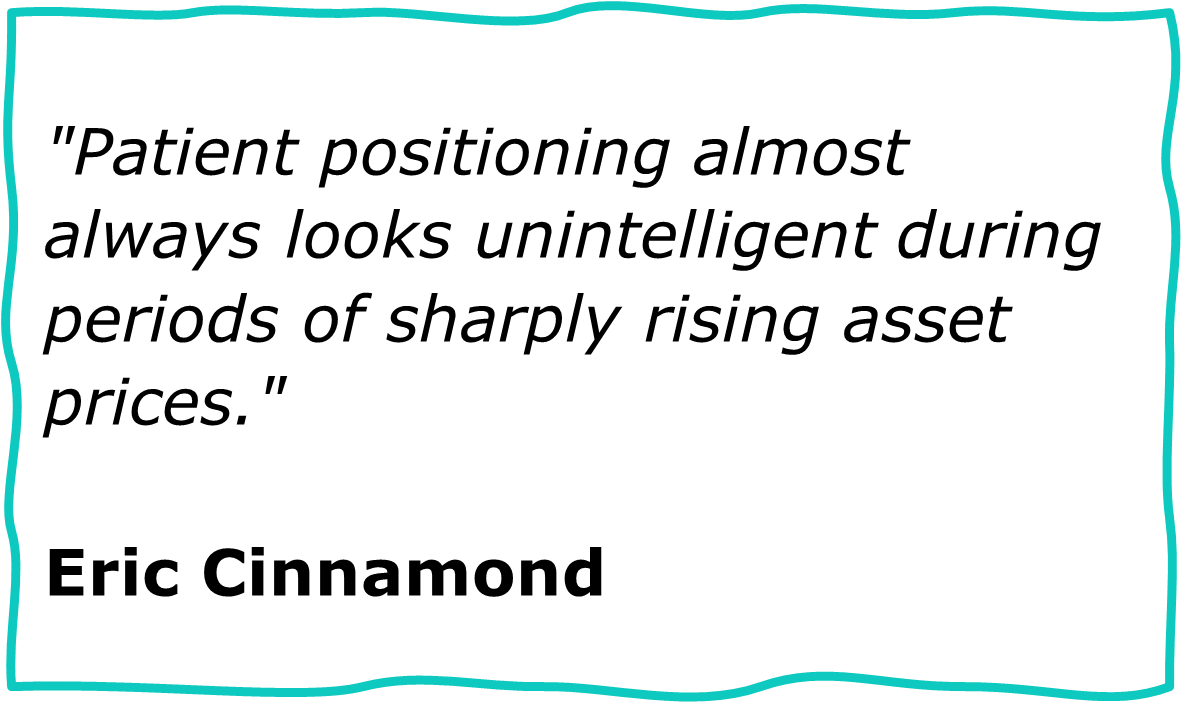 2023 was a year like no other I have encountered since the 1980s. As the first month of 2024 draws to a close, the final raft of reviews from the great and good have come across my desk, and they re-iterate that the past year was very unsettling. I will share their thoughts with you in a moment, but first the US stock market hitting a new all-time high…
2023 was a year like no other I have encountered since the 1980s. As the first month of 2024 draws to a close, the final raft of reviews from the great and good have come across my desk, and they re-iterate that the past year was very unsettling. I will share their thoughts with you in a moment, but first the US stock market hitting a new all-time high…
In our teleconference in November 2021 we anticipated both the level and timing of the S&P 500 peak which occurred on 3rd January 2022. That now feels like the easy bit! In the teleconferences and blogs which followed I regularly highlighted that the downturn from that point had two broad paths:
- A neat and reasonably fast zig-zag correction. This would have felt like a rolling crash, and would have had the advantage of relative speed.
- A so-called flat correction, which is more long-winded, confusing and frustrating. This arises because it falls quickly, and then staggers back to the previous peak, resurrecting complacency amongst many, “the market always recovers” etc… and then the final painful slump occurs.
In the December teleconference, you can see clearly what a flat correction looks like on slide 9, showing the precedent stretching across the Noughties. Lest we forget, slide 8 in the same teleconference shows the expectation for falls in the S&P 500.
The first move down from the 2022 peak was 1,220 points, what we call wave A. The move upwards which has followed is called wave B. If the wave B terminates in a textbook fashion (which is where it is always best to start) it would peak at about 5,087, which is 3.9% above where the S&P 500 sits as I write. The next target would be 5,263, 7.5% above today.
The final peak just ahead would hardly be a shock. This wave analysis is interesting, and often a useful indicator, but it should never be used in isolation. As we have covered this many times before, in teleconferences and blogs, I will not repeat all of the detail. It suffices to say that a multitude of valuation and sentiment indicators for the US stock market are very elevated, if not at record highs. Take care.
Back to those missives that have been coming across my desk in the last couple of months, here are snippets from some of the typically more successful and thoughtful money managers in the UK and US.
You might recall the story from ancient times, of the slave who would walk behind the triumphant Roman general, and whispered in his ear “Memento Homo”, or “Remember you are mortal”.
Across the global investment industry there was a lot of such whispering as 2023 drew to a close, and the most honest practitioners, to their credit, did bare their souls.
One who manages £3 billion, and is no flash Harry, put it simply:
“Too many of the things which were meant to go down went up, and a few of the things which were meant to go up went down.”
The problem was that as we entered 2023 the declared outlook of the most experienced money managers was bleak, at best. JP Morgan’s Jamie Dimon (personal net worth $2 billion) said that a hurricane lay on the horizon. Mohammed El-Arian, ex PIMCO, warned of dangerous seas ahead. These sentiments were widely held.
The main hedge fund of Ray Dalio’s Bridgewater, managing $72 billion, ground out a gain of 7% by the end of October, and ended December down 7% for the year – despite the immense input of Ray himself, plus 1,300 employees.
One manager of $2 billion expressed his frustration thus:
“What worked yesterday isn’t working today and probably won’t work tomorrow.”
As the UK’s Jonathan Ruffer put it (his firm manages £26 billion, 330 staff):
“The extraordinarily long bull market in equities has not prepared investors for the battles ahead… This is not an intellectual exercise, it is a battleground.”
It is not difficult to understand how we got to this point. In 2018 we expressed the belief that when the 40-year cycle of falling inflation and interest rates came to an end (that has now happened), there would be no one in the investment industry with any experience of a different era.
Although 2023 wasn’t a terrible year for investing, with mixes of small losses and small gains, the views we saw expressed were more a mix of frustration and deep reflection “after three years riding a rollercoaster”, as The Economist put it. It was just that for many serious-minded money managers, and also a significant number of self-directed investors, 2023 was the last straw.
Yet opportunities persist, as you will see in the next TopFunds Guide, due out shortly.